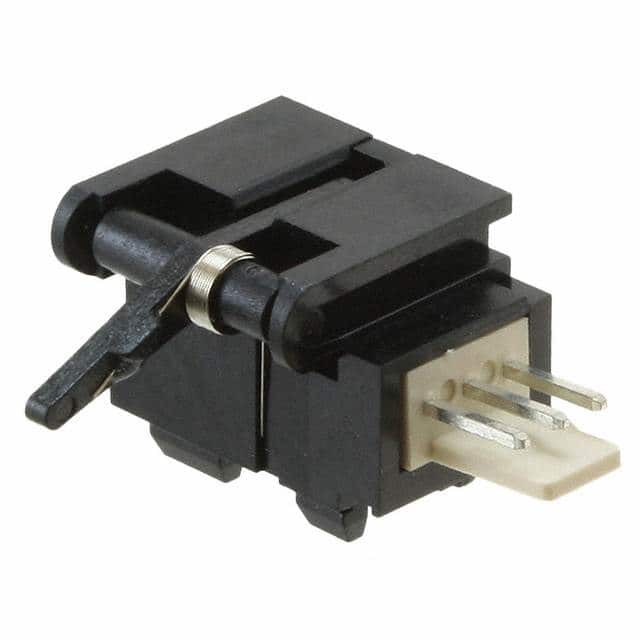Lihat spesifikasi untuk detail produk.

OPB698A Encyclopedia Entry
Product Overview
The OPB698A is a photo interrupter sensor that belongs to the category of optoelectronic devices. It is commonly used for detecting the presence or absence of an object, and it possesses unique characteristics that make it suitable for various applications. The sensor is typically packaged in a compact housing and is available in different packaging/quantity options to cater to diverse user requirements.
Basic Information
- Category: Optoelectronic device
- Use: Object detection
- Characteristics: Compact, reliable, high precision
- Package: Compact housing
- Essence: Reliable object detection
- Packaging/Quantity: Various options available
Specifications
- Operating Voltage: 3V to 5.5V
- Output Type: Digital
- Sensing Method: Phototransistor
- Operating Temperature: -40°C to 85°C
- Dimensions: 5mm x 7mm x 2.5mm
Detailed Pin Configuration
The OPB698A sensor has a standard pin configuration consisting of three pins: 1. VCC (Power supply) 2. GND (Ground) 3. OUT (Digital output)
Functional Features
- Reliable object detection
- High precision sensing
- Digital output for easy interfacing
- Wide operating voltage range
Advantages and Disadvantages
Advantages
- Compact size
- Wide operating voltage range
- Digital output for easy integration
- Reliable performance
Disadvantages
- Limited sensing range
- Susceptible to ambient light interference
Working Principles
The OPB698A operates based on the interruption of the infrared light beam between the emitter and receiver components. When an object obstructs the light path, the phototransistor senses the change and produces a digital output signal, indicating the presence or absence of the object.
Detailed Application Field Plans
The OPB698A sensor finds extensive application in various fields, including but not limited to: - Industrial automation - Robotics - Security systems - Printers and copiers - Consumer electronics
Detailed and Complete Alternative Models
For users seeking alternative models with similar functionality, the following options are available: 1. OPB608A 2. OPB708A 3. TCST2103
In conclusion, the OPB698A photo interrupter sensor offers reliable object detection capabilities in a compact form factor, making it suitable for diverse applications across different industries.
Word count: 344
Sebutkan 10 pertanyaan dan jawaban umum terkait penerapan OPB698A dalam solusi teknis
What is OPB698A?
- OPB698A is a reflective object sensor that can be used for detecting the presence or absence of an object.
What is the operating voltage range of OPB698A?
- The operating voltage range of OPB698A is typically between 4.5V and 5.5V.
What is the sensing distance of OPB698A?
- The sensing distance of OPB698A is approximately 0.125 inches (3.175mm).
Can OPB698A be used to detect transparent objects?
- Yes, OPB698A can detect transparent objects such as glass or plastic, but the sensing distance may be reduced.
What is the output type of OPB698A?
- OPB698A provides a digital output, either high or low, based on the presence or absence of the detected object.
Is OPB698A suitable for use in harsh environments?
- OPB698A is not designed for harsh environments and may require additional protection if used in dusty or wet conditions.
What is the typical response time of OPB698A?
- The typical response time of OPB698A is around 10 microseconds.
Can OPB698A be used with microcontrollers or PLCs?
- Yes, OPB698A's digital output makes it compatible with microcontrollers, PLCs, and other digital logic circuits.
Does OPB698A require calibration before use?
- OPB698A does not require calibration and is typically ready for use after proper connection and power supply.
What are some common applications of OPB698A?
- OPB698A is commonly used in applications such as paper detection in printers, edge detection in robotics, and object counting in industrial automation.

